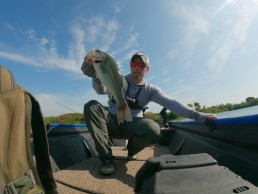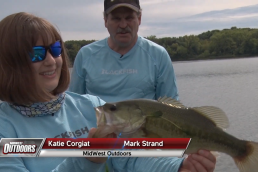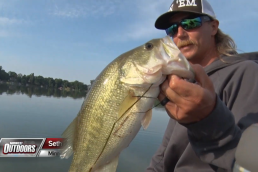Skip on Through the Summer Heat
SHARE THIS POST
There’s an old saying you’ve probably heard before, and it goes something like this:
“You can always find some largemouth bass up shallow, on any body of water, at any time of the year!”
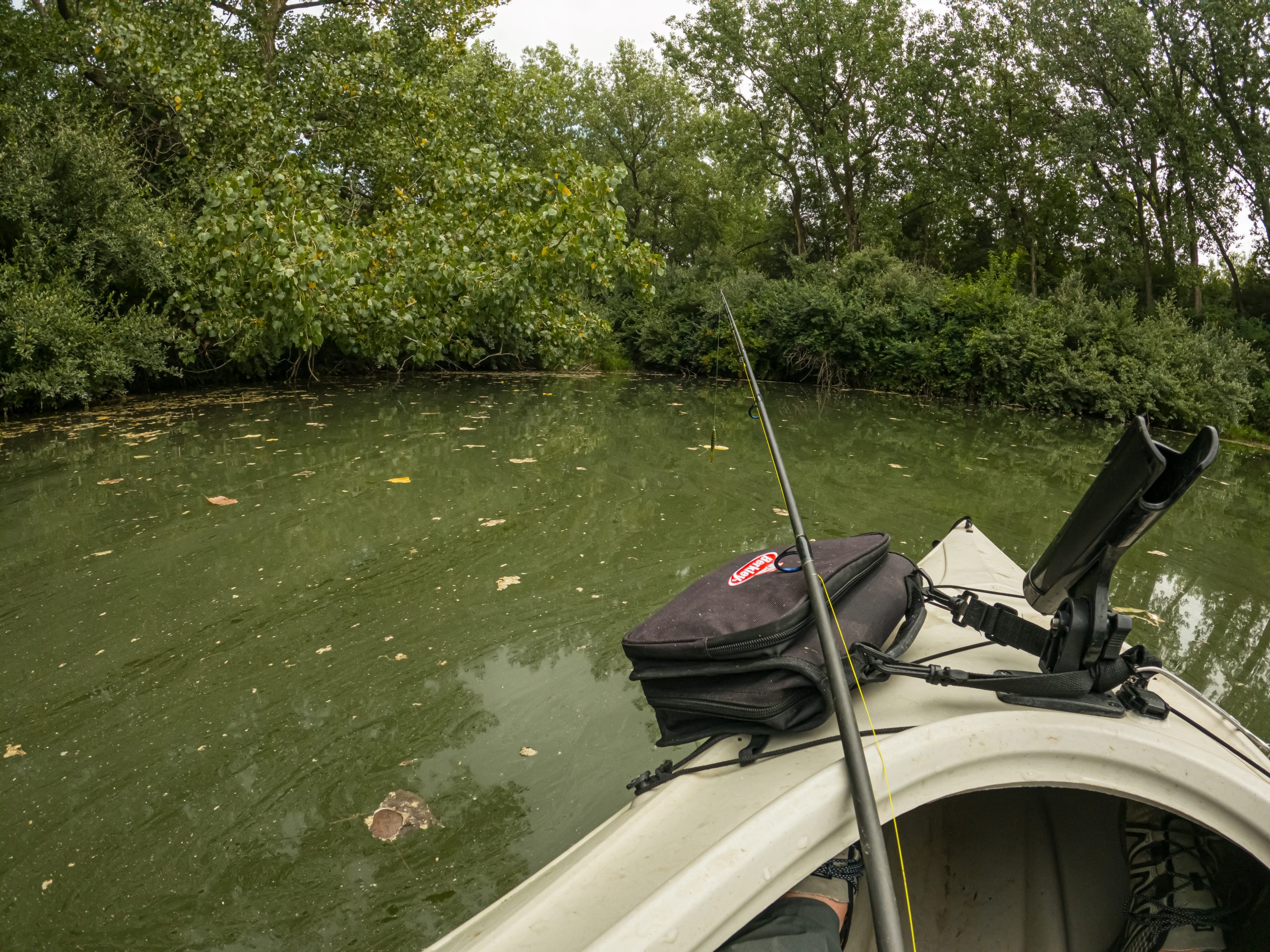
Is that good advice? Meh. It’s neither good nor bad, but it’s also not black and white. Sure, there can always be some fish up shallow, even in the intense heat of the summer months. Some say bass can’t live in 90-degree water, but if there is food present and the water is oxygenated, with maybe a little current or an incoming stream—oh, if there is food to eat—with some sort of cover, especially overhead cover—and food, I think—then yes, they can absolutely live there.
That doesn’t mean it’s always the best bite, though.
One of my favorite ways to target bass throughout the summer period is fishing a jig or a dropshot 15 to 25 feet deep, around man-made brush piles, sunken timber, boulders or humps. Underwater bars can be dynamite (they’re like dinner tables for gamefish), but even when I’m fishing deep water, I always have a skipping rig on the (tiny) deck of my jon boat. When I come across something that looks “skippable,” I’ll set aside my jig rod and fire a few casts up dirt shallow to try to trigger a reaction strike from anybody sitting up in the jacuzzi. Throughout the years, I’ve learned a few tricks that help make this an extremely enjoyable—and productive—technique for rounding out a hot, Midwest summer day on the water.

What is skipping?
Skipping a bait is similar to skipping a rock. Remember yesteryear, when you’d pick up a half-dollar sized stone that was nice and flat, lean over at a 45-degree angle, and absolutely laser a sidearm throw? That rock would skip what seemed like a hundred times when you nailed it! Well, skipping plastic is similar.
You can perform this cast with a spinning rod or a baitcaster. Leaning at a 45-degree angle in this case is optional, but you pick out a target, pull back and then flick the rod tip while keeping the bait low. If you perform the cast correctly—and you’re using a good skipping bait—it will skitter across the water, up under overhead cover, back into the gnarliest of spots where the big girls hang.
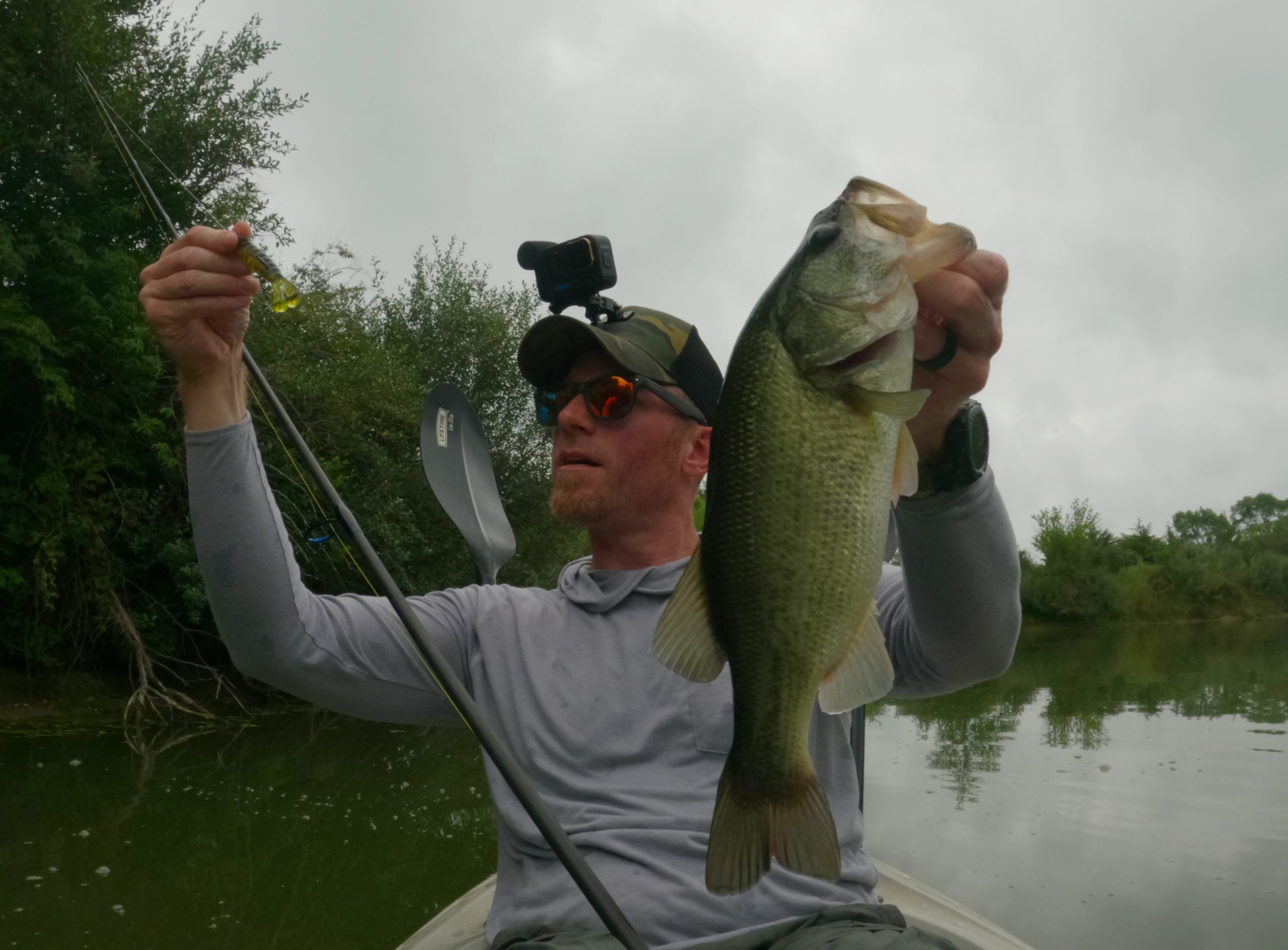
What are the best targets to skip?
Here in Illinois, when it gets hot, I’m looking for one primary thing: shade. If I come across shade, I’m going to skip my bait up into it. Or across it. Or next to it. Oftentimes, when I’m working my jig across an underwater bar, zigzagging back and forth close to shore and then back out deep, I’ll come across a section of shoreline that contains a bush or a branch that stands out. Something about it will catch my eye. Something is… different.
Maybe it sits a bit closer to the water. Maybe it hangs out a bit further. Maybe the leaves are a bit thicker. Maybe it sits directly over the top of an exposed root system, or a boulder, or a log, or an old tire. Whatever it is, if it’s different and it’s shady, I’m going to skip my plastic as far back as possible to try to trigger a strike.
(Also watch out for shade around docks, culverts and small bridges.)
Are you enjoying this post?
You can be among the first to get the latest info on where to go, what to use and how to use it!
What are the best baits to skip?
Some fellas like to skip jigs. In fact, some manufacturers make jigs that are specifically designed for skipping. However, where I fish, I don’t need the weight because I’m fishing super-shallow. Even when I’m probing deep water like I mentioned above, the shady targets I’m skipping along the shoreline have bass just 1 or 2 feet beneath them. Most strikes are simply a reaction. The bait skips in, they startle, they hammer, I set the hook and laugh like a maniac.
Because the strikes come so fast, you don’t need a bait that “drops in.” You certainly can skip a traditional, salt-loaded, sinking stickbait; it works well and I recommend that you try it to start. But you’ll also want to try skipping baits that float. Z-Man ElaZtech baits work really well for this application. Pick a plastic that has smooth or flat sides (just like the perfect skipping rock) and avoid plastics with appendages or flappy things. I like fluke-style baits (this was how I got started). I’ve had pretty good luck with the Z-Man Goat in the 3.75-inch size (although it does have some small, flappy things), but my absolute favorite bait to skip is a hybrid of sorts called the Z-Man Fatty.
FattyZ are about 5 inches, so they are more compact than big worms (along the lines of a stickbait). The smaller size is easy to inhale and less prone to wrapping around branches, but they are bulky enough to zero in on. They sport a bulbous tail and look like an easy, delicious meal. There’s a molded hook slot that makes weedless rigging easier. Even though they were designed to be a great shaky head bait for power finesse situations, they work exceptionally well for skipping. If I could only take one bait, FattyZ would get the nod.
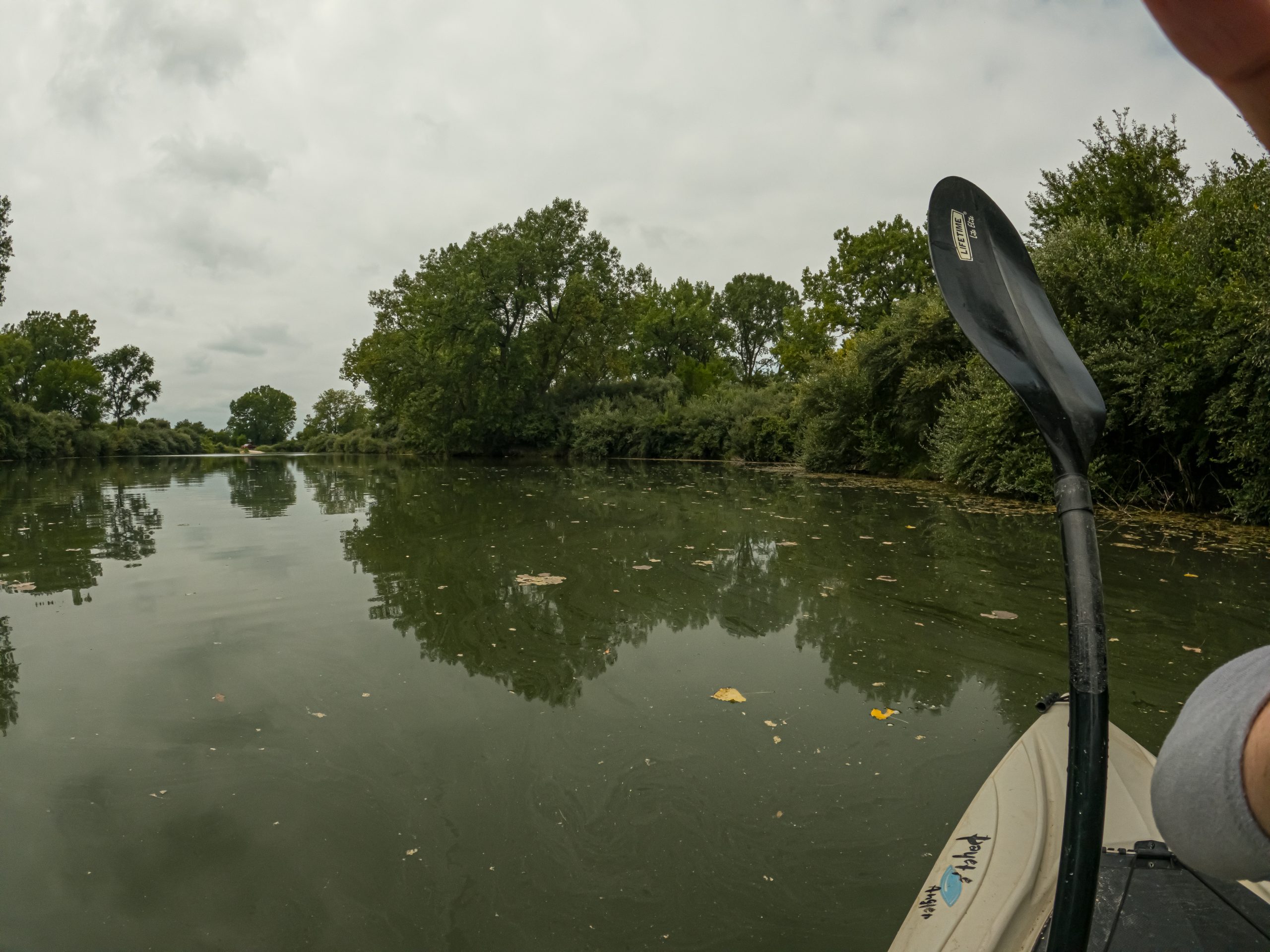
What is the best skipping setup?
My skipping setup is simple. Effective. Minimalist. I start with a 6’6” medium-heavy rod (stout, fast action) paired with a size 30 spinning reel. I’ll spool up with 40-pound braid, but I always, always, always add a 2- to 3-foot fluorocarbon leader—25 pound test minimum—which connects to my 3/0 EWG hook. That hook will hold the plastic in place with some sort of bait keeper near the eye, and that will complete my weightless Texas Rig.
The fluorocarbon leader is a necessity, but not for the reason you might think…
While fluoro is invisible underwater, this is not a stealth presentation. Braid is strong, and it is also extremely flexible. When you skip into a bush with straight braid, if your bait or line even looks at a stick, it will wrap around it 573 times before you realize what’s going on. You’ve ruined the spot, and depending on how far back you skipped, you might need to cut your line.
Thick fluoro is stiff and abrasion resistant. So not only will it fray less when you skip into overhanging bushes; fluoro is much less prone to getting wrapped around branches. This means additional casts, less frustration, and more fish in the boat.
Skipping a bait is active, productive and intentional. It involves the act of selecting a target, taking aim and trying to place your bait right in the sweet spot. It’s a great way to break up a slow, lethargic bite, and it can be productive on even the hottest days.
Plus…it’s just downright fun.
Apply a few of these tips and get skipping. You’ll be glad you did!
MWO
SHARE THIS POST
Did you enjoy this post?
You can be among the first to get the latest info on where to go, what to use and how to use it!
AJ Hauser
AJ Hauser is a fisherman, angling educator, and website designer/consultant from Ottawa, Illinois. To watch project videos, bait reviews, rigging tips and in-the-field escapades, visit TheMinimalistFisherman.com or contact aj@theminimalistfisherman.com.
